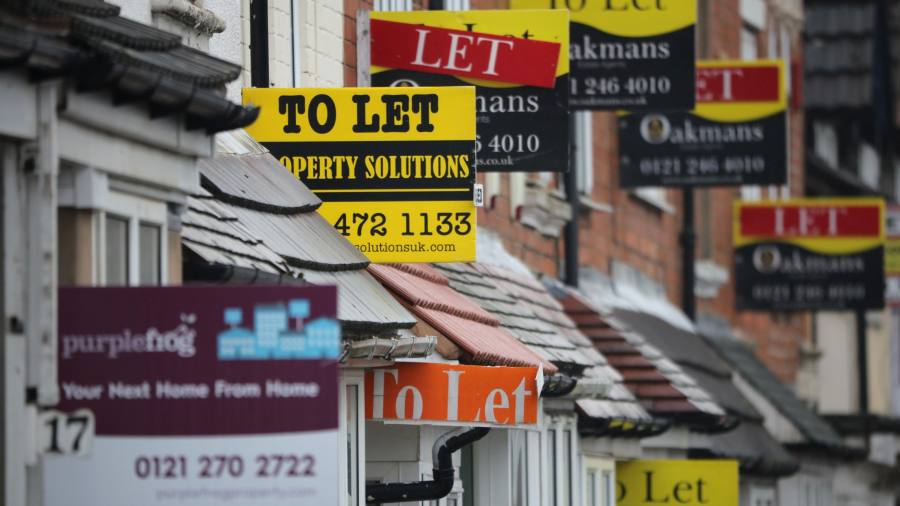
It’s painful being a homeowner with a remortgaging deadline approaching. But perhaps not as painful as being a tenant.
Figures from the Office for National Statistics last month showed that while 45 per cent of the bill-paying population found energy hard to afford and 30 per cent of those with rent or mortgages found payments tricky, the picture was about 15 percentage points worse among renters than indebted homeowners.
That’s not entirely surprising. Renters’ personal finances are more strained than their owner-occupier counterparts. They spend more of their income on rent than homeowners do on mortgages — around a third of average earnings. In London, official data marks rent as unaffordable for everyone but those on higher incomes. The only English regions where it is affordable for those on lower incomes are the East Midlands and the North West.
The question is how much worse it will get as mortgage rates rise — and what that means for England’s landlords and their lenders (Scotland has imposed rent controls). And it’s complicated.
There’s a dearth of reliable data about the private rental sector. Still, the basic story is that there’s a squeeze going on with demand significantly outstripping supply. A combination of tax and legislative changes are probably to blame on the supply side. The effect of higher mortgage rates in pricing out first time buyers helps stoke demand, as Neal Hudson of BuiltPlace points out. Property portal Zoopla put rental demand at more than double its five-year average while the stock of homes for rent is close to 50 per cent below that benchmark.
The consequence has been higher rents — even if, because of a period of stagnation during the pandemic and income growth, the proportion of income spent on rent isn’t actually far out of line with the longer run average. Both Rightmove and Zoopla, which track new lettings, put the pace of annual rental growth at between 11 and 12 per cent in the third quarter of this year. That doesn’t include renewals, where rent rises are likely to be lower. Even so, the ONS data point to the fastest pace of rental growth since the start of its series in January 2016.
Combined with wider pressures on disposable incomes, the prospects for landlords to jack up rents further seems constrained. But whether that’s a problem for landlords or their lenders is a thornier issue.
With residential mortgage rates around 5.5-5.75 per cent, RBC analyst Benjamin Toms calculated last month that buy-to-let mortgage costs would increase by around £375 a month. If landlords passed on 75 per cent of that, it would equate to a 26 per cent increase in rents with just over half that falling in 2023, according to Toms.
That is less than the kind of increases homeowners face (more like £420 a month). But it’s still the sort of chunky increase that seems hard to pass on. Tenants will trade down — and younger ones boomerang back home.
Richard Donnell, research director of Zoopla, argues that affordability constraints mean the pace of rental growth is close to its peak. Debt levels aren’t so bad that landlords will be forced to raise rents across the board. The median loan-to-value for buy-to-let landlords is just shy of 50 per cent, according to last year’s official survey of English private landlords. Even if valuations are falling, for a seasoned buy-to-let book at 50 per cent LTV or less, current rent probably covers interest payments of 6 per cent, Donnell says.
That also limits the exposure of landlords’ lenders. Banks with significant books of lending to amateur landlords are probably worst placed, says analyst John Cronin of Goodbody: the building societies, Virgin Money UK and Metro Bank, for example. Even then, the amount of equity in the properties means that it may be margins that suffer rather than loan losses, unless the housing market really tanks.
What is hard to know is how the squeeze will play out among the ranks of mom and pop landlords. A report from the UK Collaborative Centre for Housing Evidence out this week found that most were prepared enough to put aside a rainy-day fund, but that only around a quarter of landlords with a single property managed anything sophisticated like calculating monthly cash flows to include the cost of maintenance and repairs.
Still, as policymakers fret about mortgage-holders’ repayments hitting 30 per cent of income, it is clear homeowners are far from the only ones hurting.
[email protected]
@catrutterpooley
City Bulletin

For an early morning round-up of the latest business stories sign up to Cat’s City Bulletin newsletter